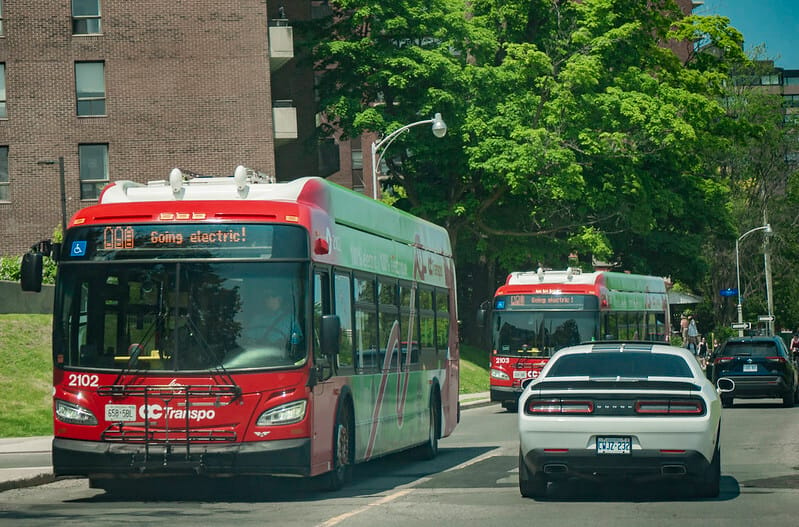It’s no secret Ottawa has struggled with its transit system for years, and for many rural residents, they are left questioning why they pay so much money for property taxes when they have fewer services.
In late April, OC Transpo rolled out ‘New Ways to Bus’, the transit organization's biggest overhaul in history, which brought changes to 123 routes. The overhaul was meant to increase performance by working within the system’s capacity, but also included 74,000 fewer bus service hours.
While a loss in some areas, it brought gains to others, including in Manotick and Richmond.
Route 279, for example, from Manotick to Tunney’s Pasture runs three times in the morning between roughly 6:00 and 8:00 a.m. In the evening, it runs in the opposite direction four times between about 3:00 and 6:00 p.m. Another option is route 299 from Limebank Station to Manotick, which runs a handful of times during both the morning and evening commutes.
For Richmond residents, route 283 runs between that community and Limebank Station three times in the morning and four times in the evening. During a portion of those routes, it instead starts and ends at McBean and Perth Streets.
Rideau-Jock Coun. David Brown said it’s too early to say if the changes have increased ridership, but said public transit is a tough sell in rural neighbourhoods.
“Manotick has actually received an increase in the level of service they experienced, though the timing has changed. Now you can catch a bus into Barrhaven and over to Limebank, whereas before it was just a bus to Barrhaven. Richmond is a similar story where you can take a bus into Manotick at Limebank or into Stittsville over to Tunney’s Pasture,” said Brown. “Though the routes have increased in time and, of course, very few people want to spend four to five hours a day commuting for an eight-hour a day job.”
But it hasn’t all been peachy. A few weeks ago, CTV Ottawa reported on a story about a woman who regularly travels from her home near Bank Street and Walkley to the music school she teaches at in Manotick. Before the system overhaul, she’d take routes 99 and 176, but now no similar options exist.
Brown calls it a unique scenario and says while he feels for the music teacher, it costs too much money to run transit routes where there is too little demand.
“It's unfortunate, but given the geography of the city of Ottawa, it just isn't always possible to provide that urban style service in a rural area,” he said.
So what is the answer?
But Brown also admitted there needs to be better transit options in rural areas. He said it starts with OC Transpo looking at itself more like a regional provider, such as the GO Transit service in Toronto.
“I think we really need to look at the level of service we provide to each of the areas in the city and how we fund those services. I am not opposed to a lower property tax charge the further away from the service that you are,” said Brown. “However the fare would need to then increase for a rider living in Munster, as an example, compared to someone in Westboro who’s surrounded by public transit options.”
A method like that would work if city council decides to move away from its “one size fits all” agenda, said Brown. He also pointed out that before amalgamation, rural areas had a private bus service.
“I think there's an opportunity that exists today to leverage that,” said Brown. “But right now we are saying there's only one level of service that can be provided. I think that's where we're missing the market — specifically in rural Ottawa. It’s a change I’d like to see.”
There are also concerns over how transit is funded as a whole. In 2007, council voted that 55 per cent of the cost of public transit should be covered by the transit fare, and the remaining 45 per cent by taxpayers. But that isn’t currently how it’s working.
“In 2025, 70 per cent of the cost is being covered by the property taxpayers and only 30 per cent is covered by the transit users,” said Brown. ”I'm looking forward to the 2026 budget getting back to that funding formula. And if not, I'll expect city staff to come back and say council needs to officially change that funding policy because I think it's disingenuous to property tax payers.”




